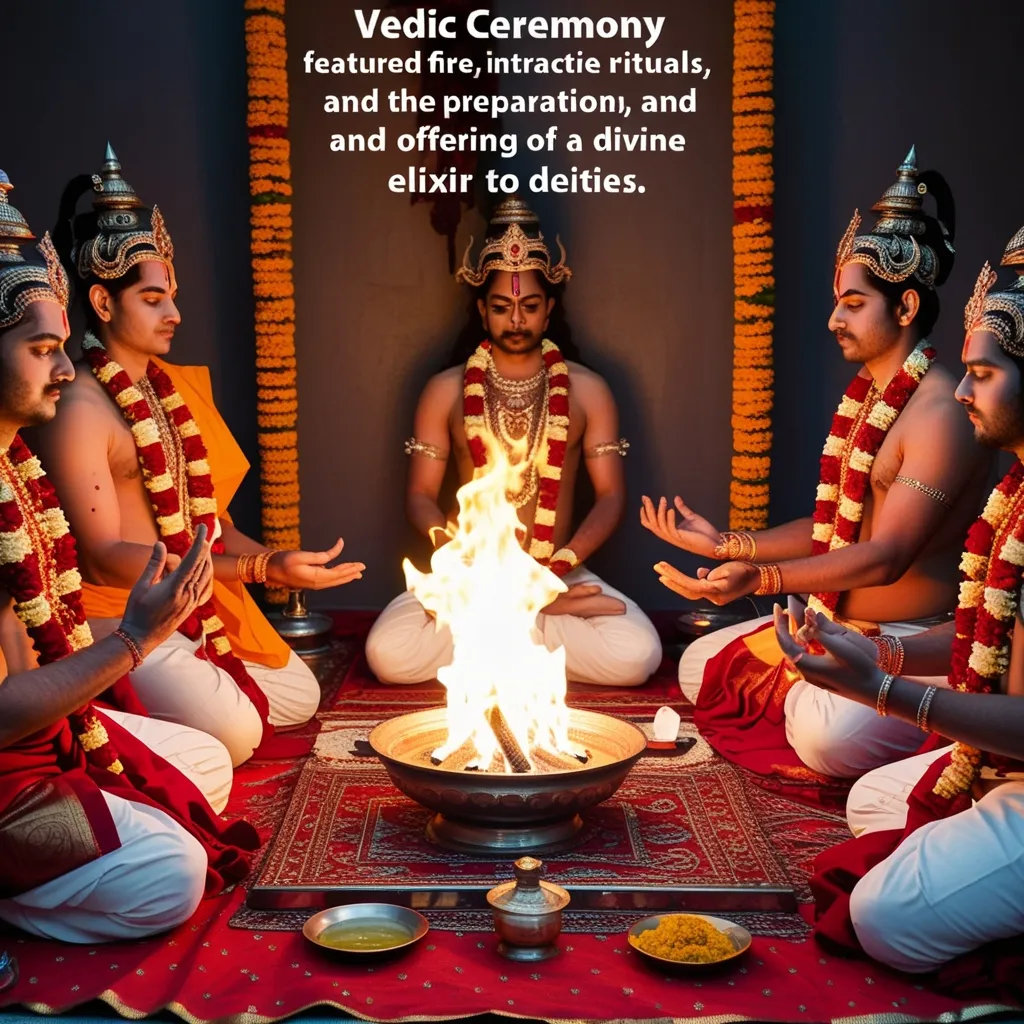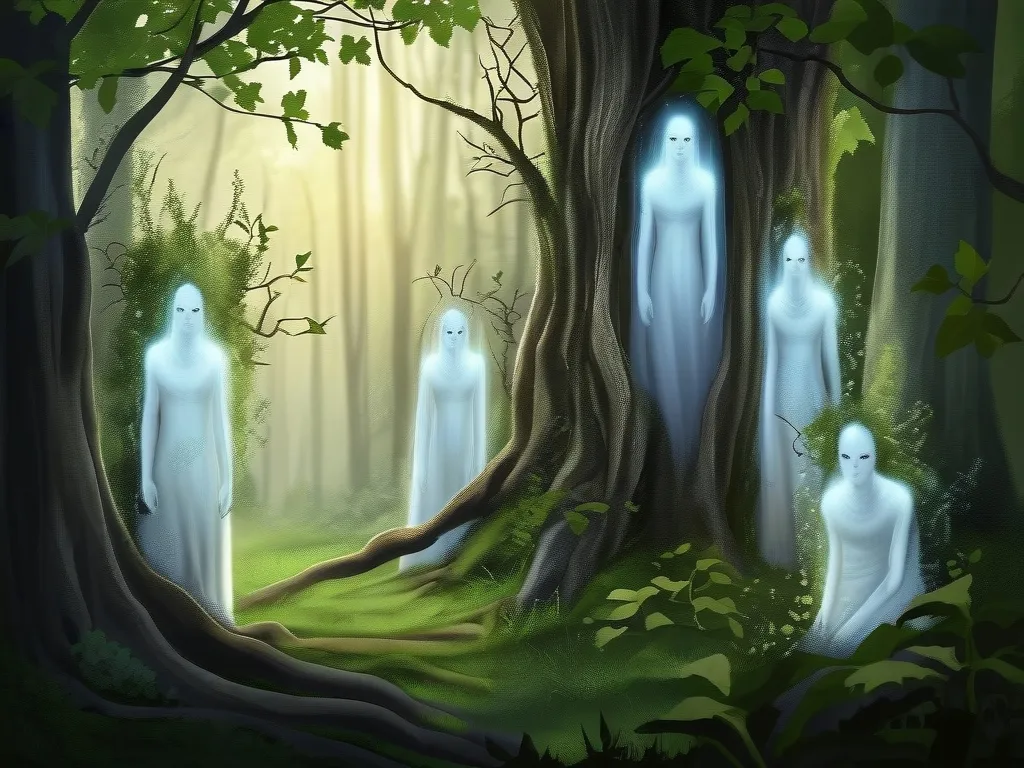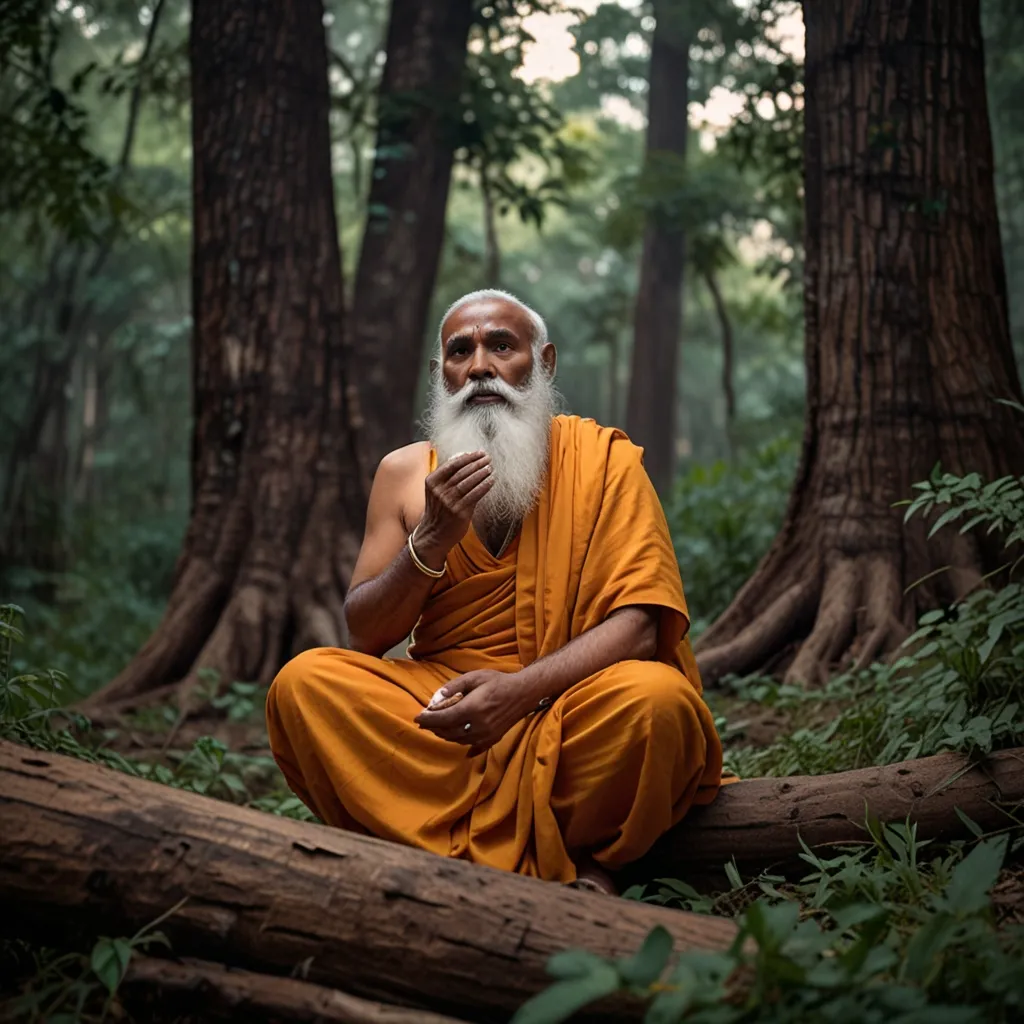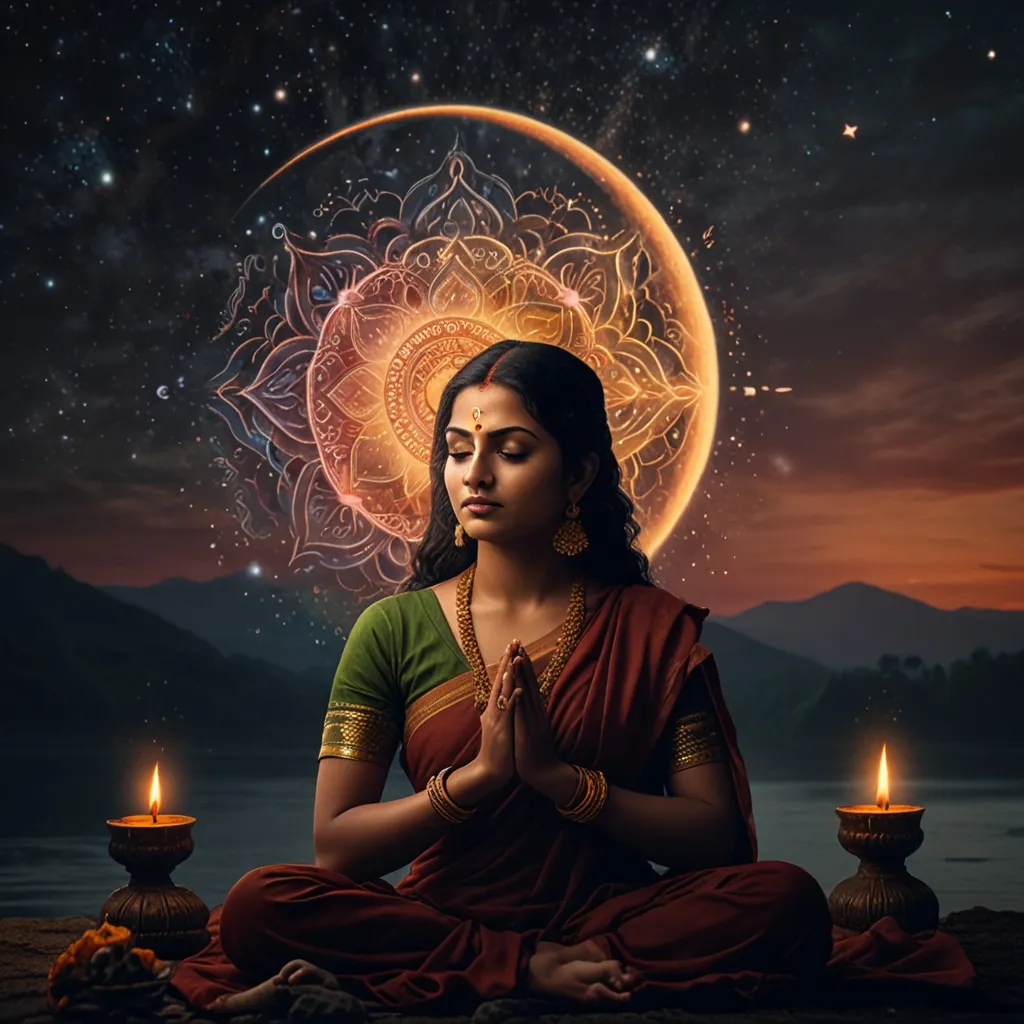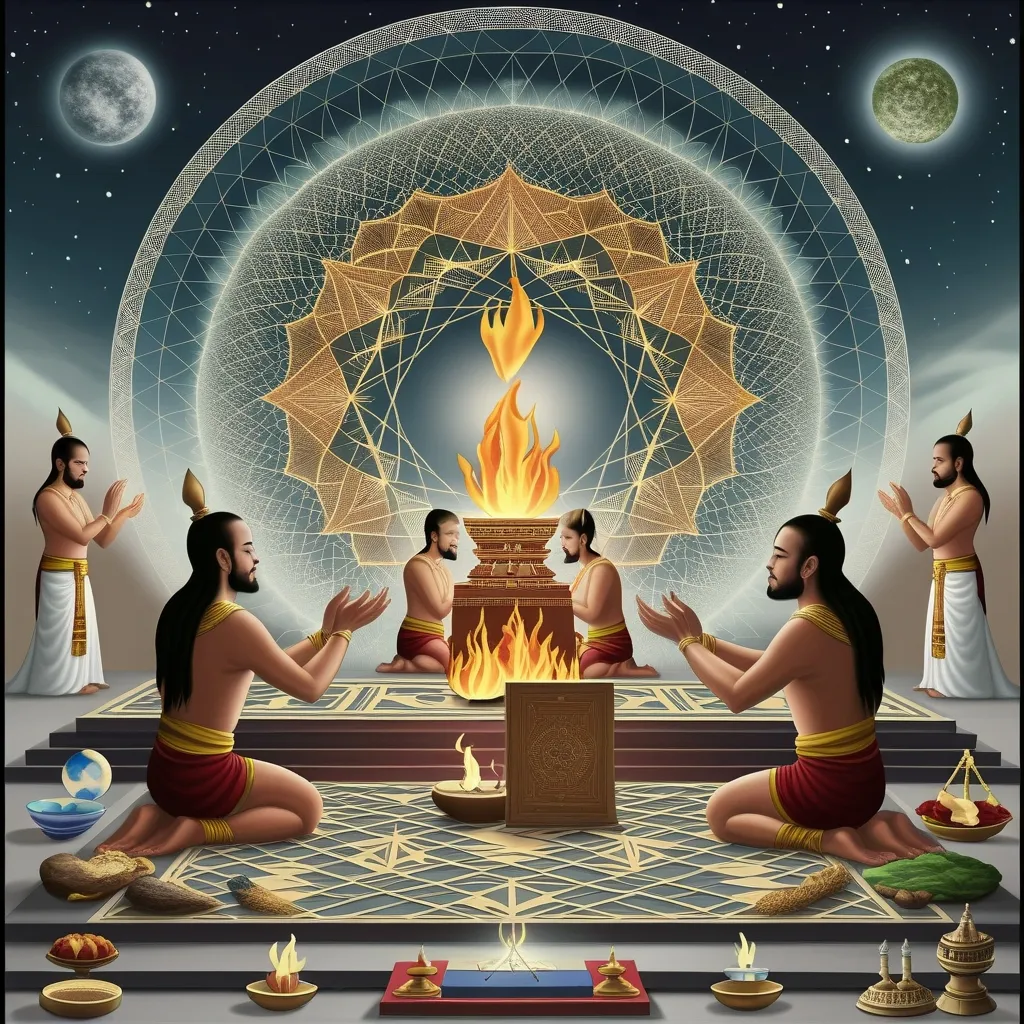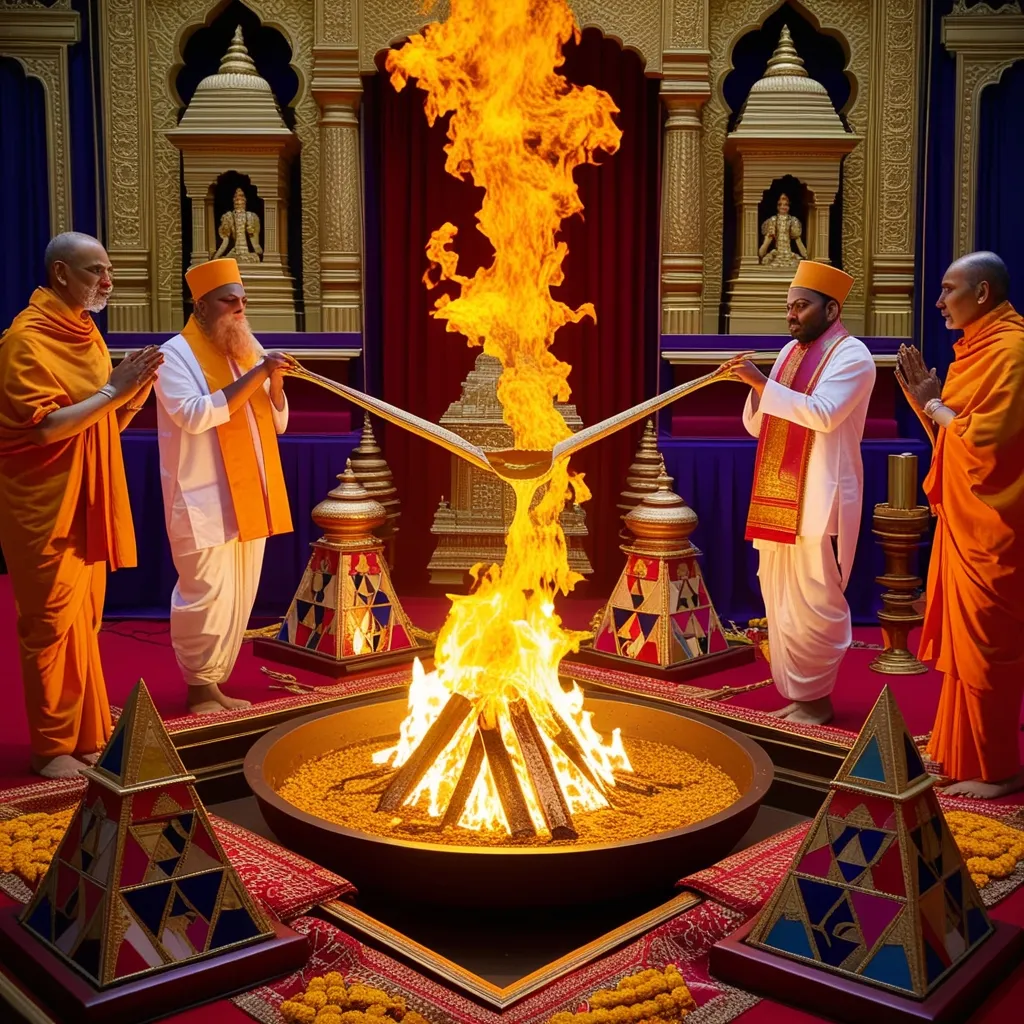The Sama Veda is like the playlist of ancient Hinduism, known for its melodies and chants. Think of it as the DJ of Vedas, bringing musical vibes to the spiritual scene. It’s ancient, written in Vedic Sanskrit, and has a special place in Hindu scriptures.
This Veda, often called the “storehouse of knowledge of chants,” is like a remix of the Rigveda. It borrows many verses from the Rigveda but arranges them in a melodic form. Imagine taking classic poetry and turning it into an epic song— that’s the Sama Veda for you!
Compiled roughly between 1200-1000 BCE, the Sama Veda is the shortest among the four Vedas with 1549 verses. But don’t let its size fool you. It packs a punch in terms of cultural and religious significance. Out of these verses, only 75 are unique, the rest are sourced from the Rigveda. This isn’t something you just read; it’s meant to be heard, like a musical score. This makes it the cornerstone of Indian classical music and dance, influencing countless aspects of Hindu cultural practices.
The Sama Veda is split into two main sections: the Archika and the Gana. The Archika is further divided into Purvarchika and Uttararchika, kinda like different albums within the same genre. These sections are dedicated to different deities: from Agni to Indra and Soma. The Gana part is another collection of melodies and chants, split into Prakriti Gana and Uha Gana.
Interestingly, the Sama Veda isn’t just one unchanging text. It has multiple versions or “recensions,” with the three main ones being the Kauthuma, Ranayaniya, and Jaiminiya. Depending on where you are in India, you might encounter different versions. The Kauthuma recension is the most popular and widely used.
In Hindu rituals and ceremonies, the Sama Veda is the go-to for important events like the Soma-sacrifice. It’s a way to call upon deities like Indra, Agni, and Soma, emphasizing worship and devotion. The chants and melodies help devotees connect with the Supreme Being and Brahman, making spiritual experiences richer and more profound.
The Sama Veda doesn’t stop at rituals; it also includes significant philosophical texts like the Chandogya Upanishad and the Kena Upanishad. These Upanishads delve into deep questions about the universe and the nature of ultimate reality.
So, in a nutshell, the Sama Veda is much more than just a religious text. It’s a fundamental part of Hindu culture, influencing music, dance, and spiritual rituals. With its melodic chants and deep connections to ancient practices, the Sama Veda continues to be a vital piece of the Hindu spiritual journey.

